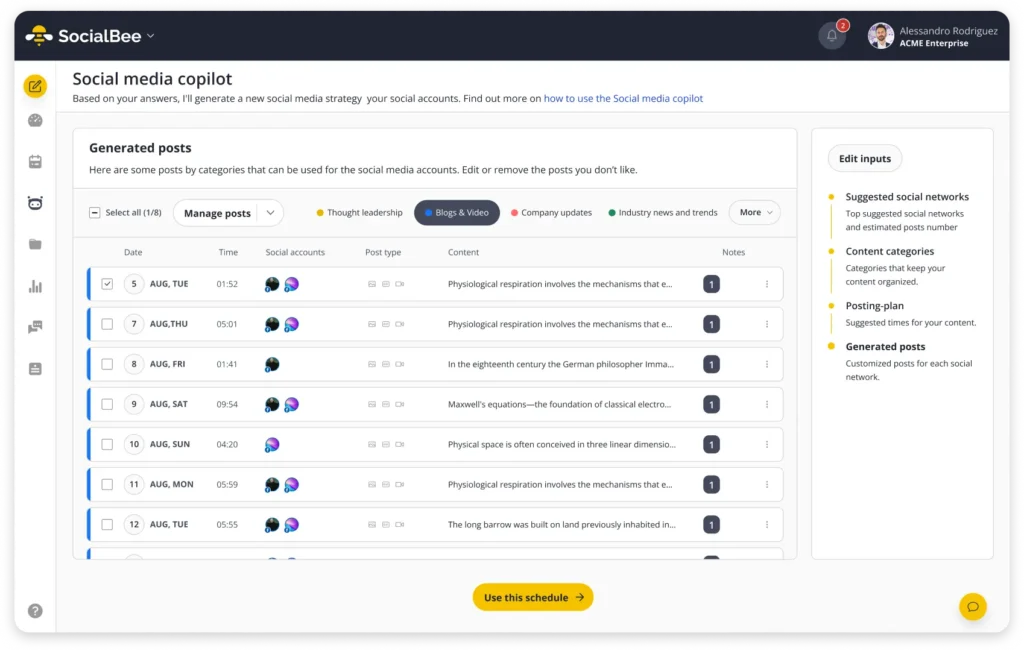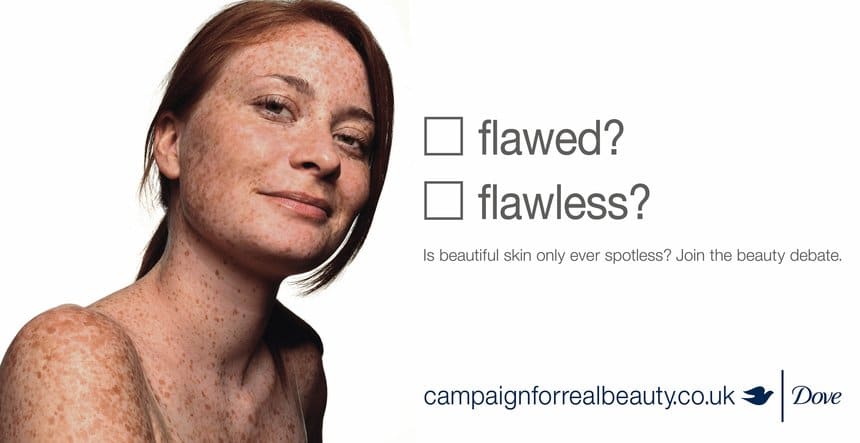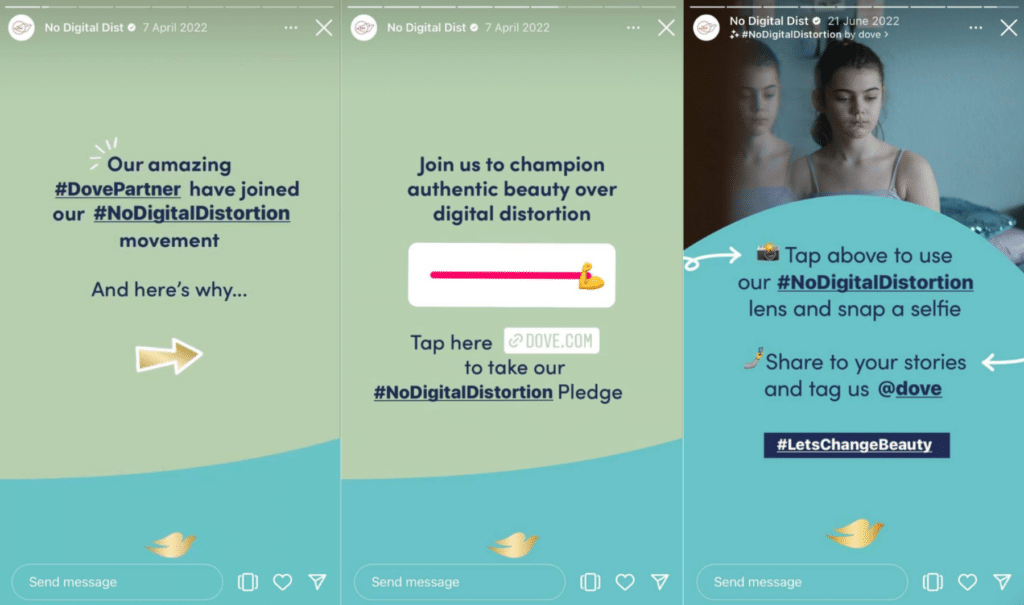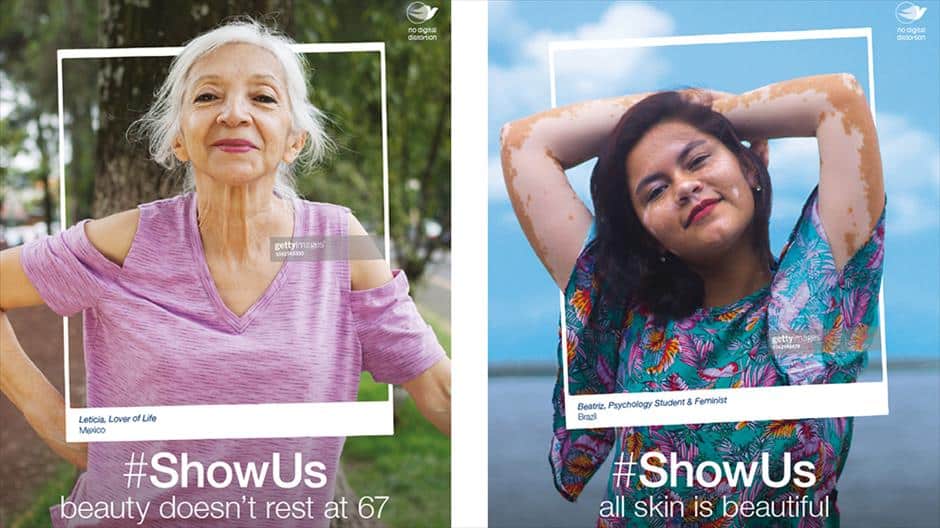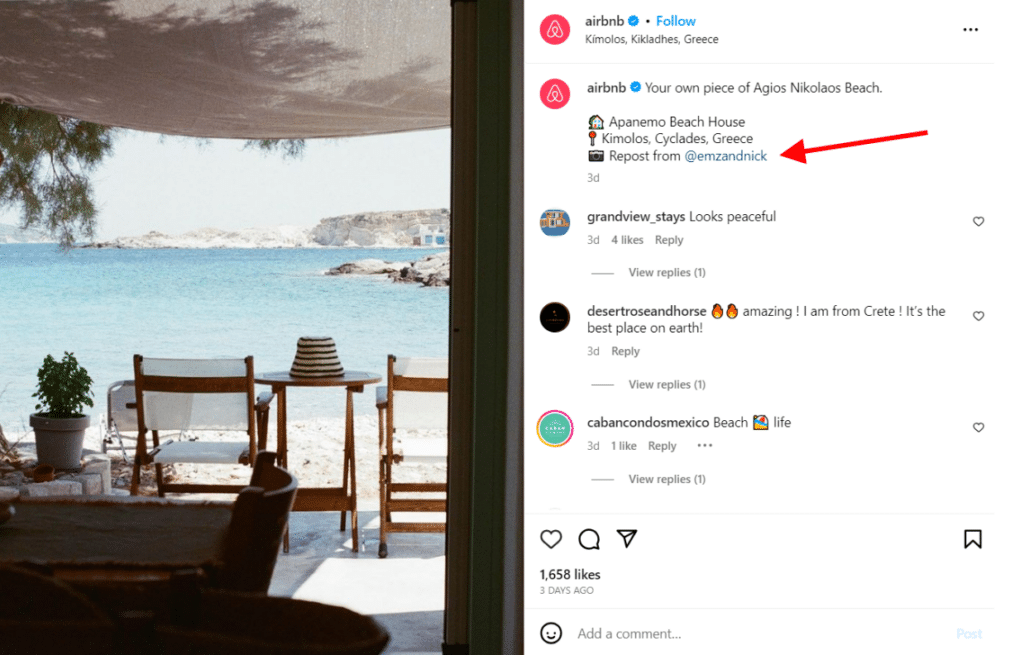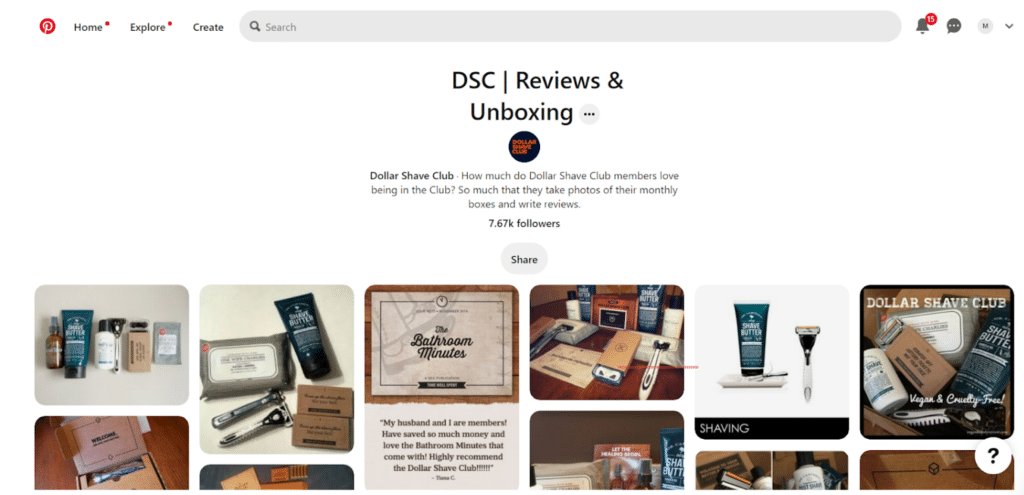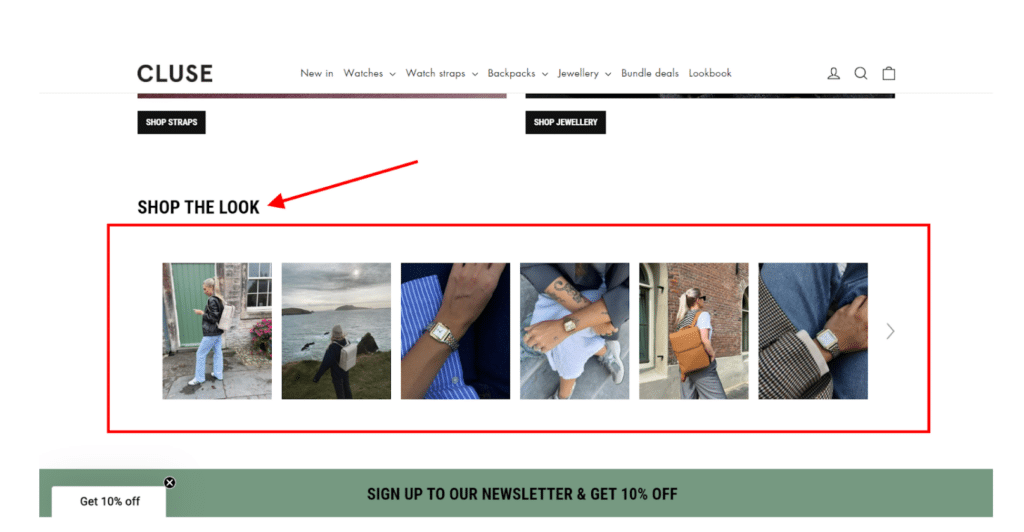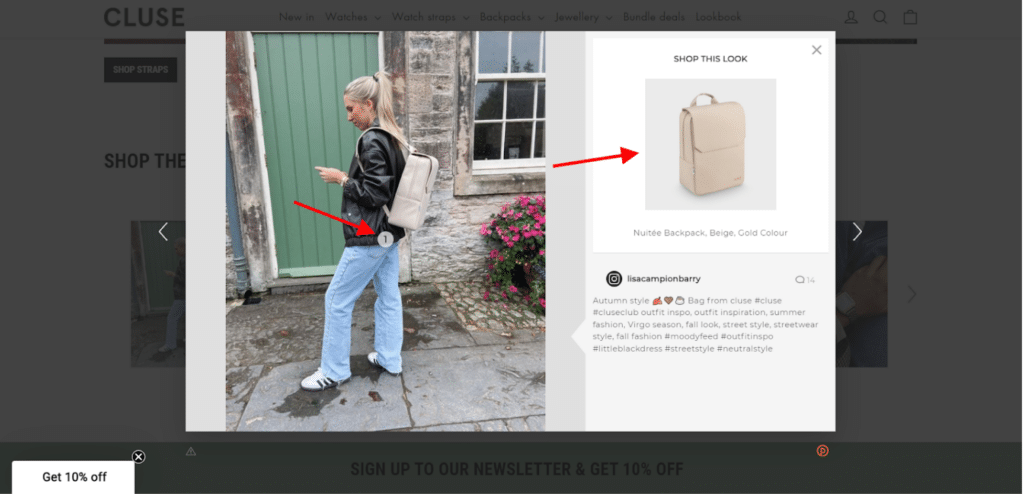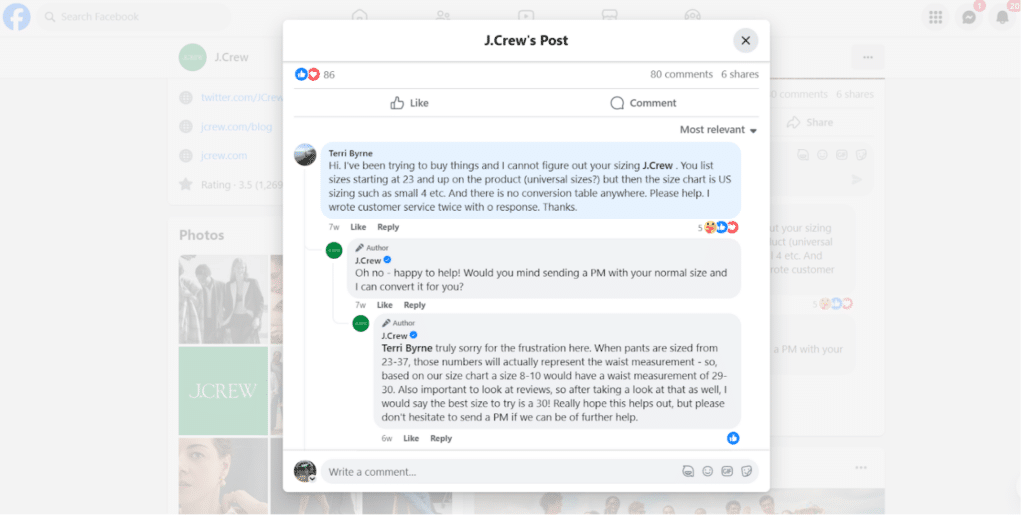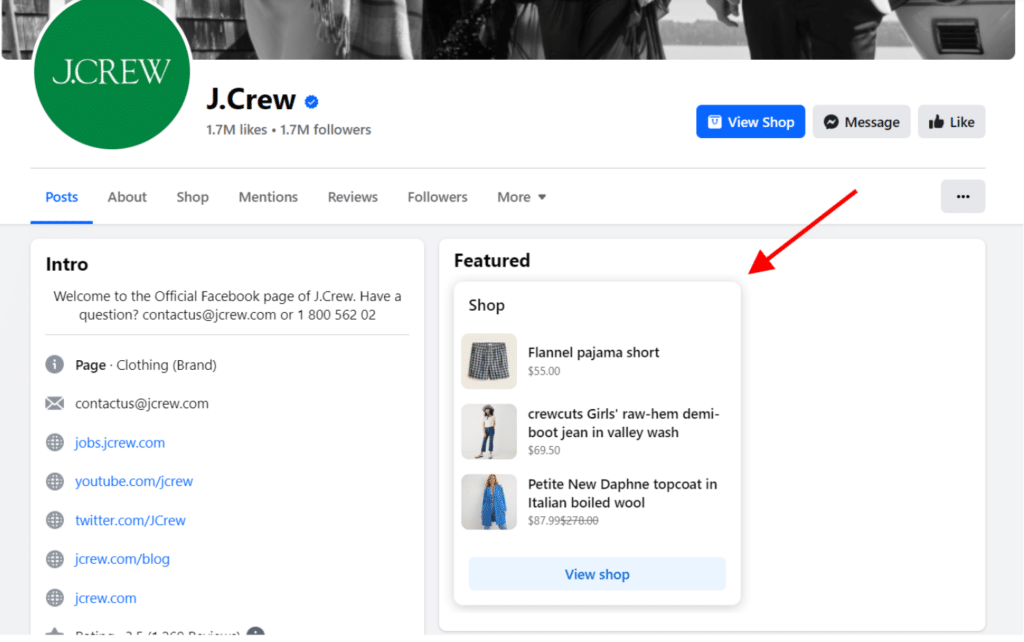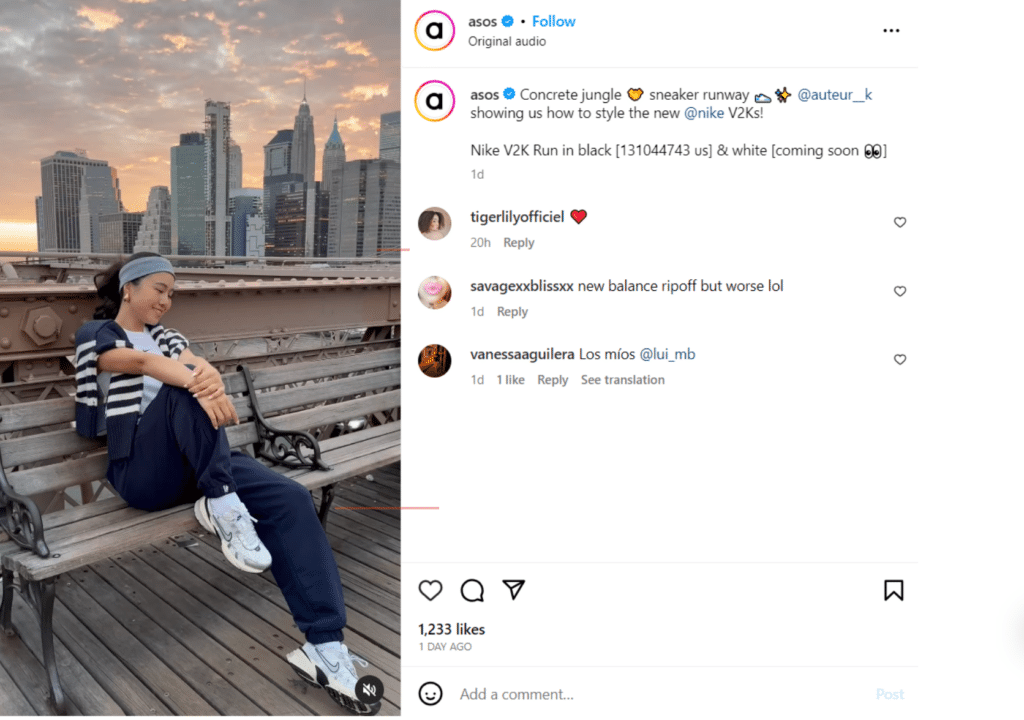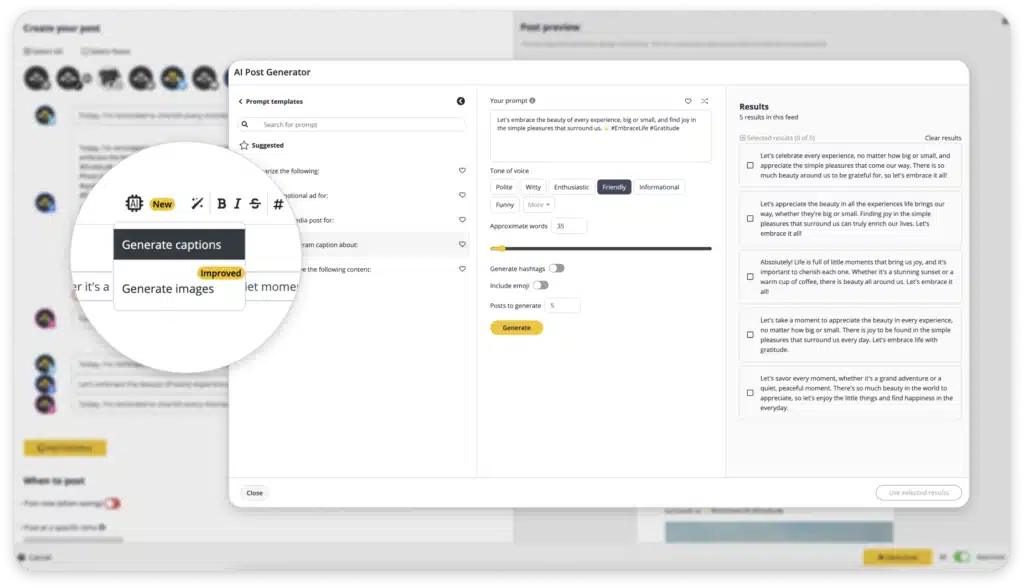
Guest Author
If you’re on the hunt for dynamic examples of social media eCommerce, your search ends here. Social media has opened numerous avenues for business expansion. While everyday users share their photos and thoughts, companies can naturally promote their products, generate buzz, and drive sales.
The concept of social commerce has recently emerged, blending social media with direct sales and enabling users to purchase products and services right from their feeds.
Wondering how you can harness the power of social commerce? Start by examining the approaches of leading eCommerce players.
In this article, we will delve into the tactics used by eCommerce giants to leverage social media effectively. You’ll not only find inspiration for your own business but also practical tips to elevate your social media strategy.
Put on your running shoes and let’s demystify eCommerce marketing!
Streamline your marketing with an efficient social media strategy template.
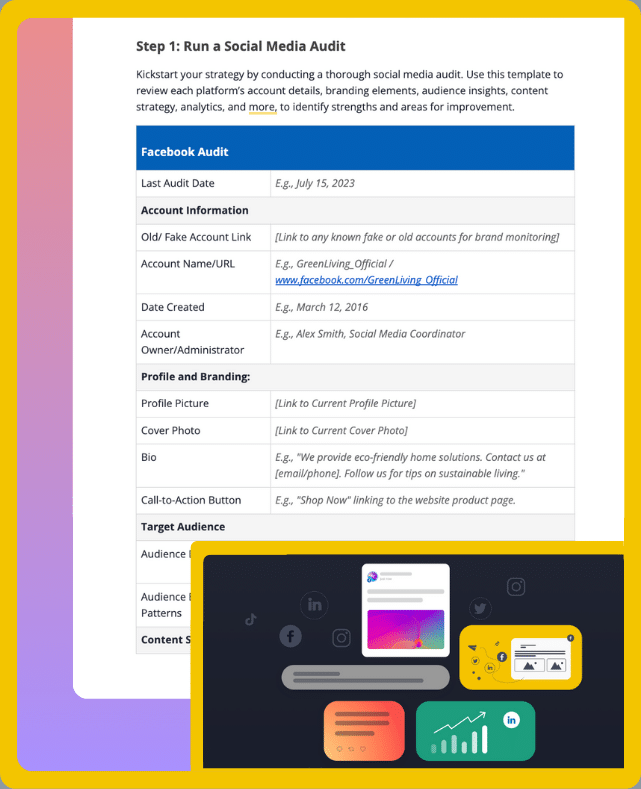
Short Summary
- Social media has become essential in eCommerce marketing, offering brands a platform to become a part of consumers’ daily lives. Having a social media presence a tool for storytelling and building a community, not just product promotion.
- Key advantages of social media eCommerce include building brand awareness, increasing conversion rates, fostering communities, showcasing creativity, and leveraging social commerce opportunities.
- Social media’s global reach, with 4.8 billion users, provides fertile ground for businesses to expand their reach, loyalty, and direct influence on conversions. It also encourages impulsive purchases.
- The merging of eCommerce and social media platforms allows businesses to transform platforms like Instagram and Facebook into selling spaces, enhancing the customer journey from social platforms to final purchases.
- Various case studies of brands like Dove, Airbnb and Dollar Shave Club showcase strategies such as aspirational marketing, challenging beauty standards, visually engaging content, creating local experiences, and using humor and relatability in social media marketing.
Table of Contents
- Why Social Media eCommerce Matters
- Social Media Marketing Examples: eCommerce Brands That Nailed It
- 1. Dove: Challenging Beauty Standards
- 2. Airbnb: Live Like a Local
- 3. Dollar Shave Club: Sheer Wit and Relatability
- 4. CLUSE: The Power of Authenticity
- 5. Burberry: A Modern Approach from a Legacy Brand
- 6. J. Crew: Utilizing Fan Feedback
- 7. ASOS: The Power of Visuals
- 8. Away: Matching Promotion with Emotions
- How to Use eCommerce Tactics on Social Media Platforms
- Frequently Asked Questions
- Empower Your eCommerce Marketing Journey Through Your Social Media Accounts!
Why Social Media eCommerce Matters
Social media has now become an integral part of eCommerce marketing, being an important ally of email marketing, search engine optimization, affiliate marketing, and digital ads.
Followers become more inclined to add your items to their shopping cart and form a community that grows with you. So, if you decide to opt for social media marketing, remember to tell your story—one post at a time.
Here are the benefits of using social media e-commerce for your business:
- Enhancing brand visibility: Social media serves as a global billboard, reaching its 4.8 billion users across the world without geographical barriers. With the right strategy, no audience segment is off limits.
- Boosting conversion rates: People search for things before they buy. Leveraging the vast reach of social media can directly impact sales conversions for both large and small businesses.
- Cultivating online communities: Social media platforms provide fertile ground for businesses to grow their reach and improve customer loyalty.
- Highlighting creativity and cultural aspects: Showcasing a brand’s unique creative and cultural elements can attract more online shoppers. Your brand is one Google search away.
- Triggering spontaneous purchases: Especially with the rise of influencer marketing, social media encourages impulsive buying as consumers engage with content, making it an effective tool for influencing consumer behavior. Especially when every purchase is just an Apple Pay tap distance.
- Creating a constant need: Social media is not only about triggering the first order, but also about making people come back. By promoting your services online, you can find ways to reinvent your eCommerce store all the time so people don’t forget about you.
Therefore, modern online businesses can turn social media platforms like Instagram and Facebook into selling destinations for consumers.
Pro tip: If you conduct a comprehensive CRO website audit, you can pinpoint areas for improvement in your social commerce efforts. It’ll help you enhance the customer journey, from social platforms to final purchases.
To maximize the potential of social media in your eCommerce strategy, consider SocialBee’s Copilot. This AI-powered tool offers personalized social media management, helping you create and implement an effective social media strategy tailored to your brand, ensuring your content resonates and engages your target audience effectively.
Let our Copilot build your eCommerce business’ social media strategy from scratch.
Start your 14-day free trial to test SocialBee’s Copilot now!
Our Copilot offers insightful recommendations for enhancing your eCommerce social media strategy:
- Recommended social media networks: Copilot identifies social media platforms aligned with your objectives. For example, if you have an online store that sells makeup products, Copilot might suggest using Instagram and TikTok in your eCommerce marketing strategy.
- Custom content categories: Tailored to your brand’s narrative and goals, Copilot suggests varied content pillars like ‘Behind-the-Scenes Stories’ or ‘Engaging Posts’. You can personalize these by adding or removing categories to better fit your social media users’ interests.
- Personalized posting plan: The tool devises a posting schedule based on your chosen content categories, arranging posts in a strategic sequence. This plan is adaptable, allowing you to tweak the schedule or add new slots to optimize your social commerce strategy.
- Pre-drafted posts: A highlight is Copilot’s ability to create draft posts for each category. Review and select the drafts you prefer. Each post is accompanied by AI image prompt suggestions, ready for use with the platform’s AI post generator, streamlining your content creation on any social media platform.

Integrate social media into your eCommerce business strategy with SocialBee!
Social Media Marketing Examples: eCommerce Brands That Nailed It
Let’s dive into the dynamic world of social media marketing through the lens of various brands that have excelled in this realm.
Each eCommerce marketing case study presents a unique approach to leveraging social media platforms, revealing how these brands have harnessed the power of digital engagement to boost their eCommerce strategies.
Here are some examples of brands that have used a social commerce strategy to the fullest:
- Dove: Challenging beauty standards
- Airbnb: Live like a local
- Dollar Shave Club: Sheer wit and relatability
- CLUSE: The power of authenticity
- Burberry: A modern approach from a legacy brand
- J. Crew: Utilizing fan feedback
- ASOS: The power of visuals
- Away: Matching promotion with emotions
1. Dove: Challenging Beauty Standards
While Dove itself is not an eCommerce business, its products are widely available through various eCommerce platforms and retail outlets.
Dove utilizes eCommerce marketing channels for sales, but its core business model is not solely based on e-commerce; rather, it’s a combination of traditional retail and online sales through various distributors and retailers.
Social media can be very dangerous for our mental health and the perception of our bodies. All those polished photos. All those smiling and successful people. This content can create significant pressure on users, especially younger generations. One of the social media case studies on our list delves into this issue and tries to combat it.
Dove is among the first companies to understand it and the importance of inclusivity. Back in 2004, the brand recognized the insufficient representation of different women in ads and, later, on social media.
Dove launched several eCommerce marketing campaigns dedicated to raising women’s self-esteem, including:
A. Real Beauty
This groundbreaking campaign was about featuring women of various ages, shapes, and sizes in Dove advertisements.
The goal of this campaign was to draw attention to what most women actually look like. But the outcome was increased sales from $2.5 to $4 billion during the first ten years.
B. #SpeakBeautiful
Their eCommerce marketing strategy is all about self-love. For #SpeakBeautiful, Dove partnered with Twitter to address the issue of negative language directed at women and its impact on their self-esteem.
It spurred positive conversations about beauty and reacted to negative tweets in real time.
C. No Digital Distortion
This initiative was about preventing people from retouching their photos to meet the established beauty standards on social media.
The corresponding “No Digital Distortion” mark signified that the images were original. Such content spoke of body positivity and the acceptance of natural beauty.
D. #ShowUs
Inclusivity is at the forefront of Dove’s messages. #ShowUs is one of the latest campaigns involving the company and Getty Images.
The brand created a stock photo library with over 5,000 images, demonstrating women and non-binary individuals from diverse backgrounds.
2. Airbnb: Live Like a Local
The next eCommerce case study on our list is Airbnb. Everyone knows this company and what it’s all about. Being a mediator between people from different parts of the world, Airbnb strives to build a global community.
To encourage users to click the “Reserve” button, the company taps into selling emotions, experiences, and human connections. So when you explore its social media content, you see that you don’t book a place, you’re choosing an experience.
Airbnb creates content specifically for each social network to connect with its audience. For example, on Instagram, the audience is more dynamic and consumes visual content more than text. It requires Airbnb to enrich its feed with UGC, storytelling, and other posts, inviting followers to share their own journeys and memories.
One of the most noteworthy Airbnb social media case studies was the one called “Live Anywhere”. Launched in 2021, it involved giving twelve individuals the chance to live in various Airbnb locations for a year.
These people provided a peek into their lives as locals and shared their experiences on social media. Social media buzz, engagement, and an increase in long-term stays as a result of this campaign were apparent.
3. Dollar Shave Club: Sheer Wit and Relatability
Dollar Shave Club is a company selling razors and other products for shaving. It’s among the social media case study examples that found a key to their audience through its tone of voice and remained consistent even after Unilever’s acquisition.
Here are some tips on how to build a strong social media brand from Dollar Shave Club:
A. Make a Memorable Launch Video
Dollar Shave Club decided to cut through the noise with a video that soon became viral.
In this video, the company showcased its products and, most importantly, manifested its ethos. The secret to such content marketing success lies in the relatable humor and sharp wit.
Dollar Shave Club (DSC) presented itself as more than just a razor company; it showcased a personality that was refreshingly honest and humorously relatable. The bottom line is to speak to potential customers as friends, not just as buyers.
B. Incorporate Social Proof and User-Generated Content
DSC uses social proof in an original way. Like many companies, they take advantage of great reviews and testimonials from customers.
But DSC went further and created a Pinterest board that featured genuine customer interactions and unboxing experiences. This creative way of combining social proof with UGC demonstrates a business that is confident enough to trust its audience with the representation of its brand.
The result of this multifaceted strategy is a devoted following, a genuine brand, and a billion-dollar valuation to top it all off.
4. CLUSE: The Power of Authenticity
CLUSE is another brand that heavily relies on UGC. It’s one of the best marketing case studies of integrating social media into the shopping experience.
Compared to most other brands bombarding users with never-ending sales pitches, CLUSE adheres to more subtle and engaging principles. Let’s focus on how it transformed its Instagram feed into a virtual storefront.
As soon as you open its profile, you notice that authenticity lies at the core of the brand. It repurposes user photos and videos, be it a digital creator with 3,558 followers or a fashion stylist with 63.9K subscribers.
The content varies from unpacking to people wearing CLUSE watches, providing a more relatable and realistic perception of the products.
CLUSE also uses specific tools to organically connect social media with its online store. For this purpose, the brand has integrated Flowbox, a social media aggregation tool, into its website. The tool automatically runs through social networks to collect relevant pictures and display them on the website. The title of this section is “Shop the Look”.
Visitors can access a dynamic and visually appealing gallery and explore more than what is present on product pages. You can click the image featuring a product. Then, you’ll see a clickable tag on it and a photo under the “Shop This Look” title. If you hit these icons, the website will direct you to the dedicated product page.
Such functionality enables you to check how the item would look in real life and how you can combine it with jewelry, apparel, etc.
5. Burberry: A Modern Approach from a Legacy Brand
Being associated with royalty, celebrities, and luxury, Burberry doesn’t exclude a wider audience from their campaigns. The brand constantly invents new strategies to appeal to buyers. Burberry’s team was among the first to adopt social media in the sector of high-end retail.
What lets it stay so fresh? Let’s consider some of its social media marketing strategies. The company constantly thinks about and like its modern consumers. It preserves its heritage of British chic and authenticity but introduces several strategies, such as:
A. Video Marketing
Video content is an effective way to tell stories and capture user attention. It lets you showcase your product from different angles and share your message and values.
Consider following Burberry’s example by using Facebook’s video features. Their brief videos give potential customers a direct experience of the brand’s unique qualities and craftsmanship.
B. Addressing the Gen-Z Audience
When Daniel Lee joined the company, he announced a rebranding and further embraced a Gen-Z style. It includes casual compositions, natural poses, and authentic backdrops, driving younger consumers to the brand.
By refraining from overly polished or staged imagery, Burberry remains up-to-date and relevant.
C. Merging Online with Offline
Burberry’s new retail store in Shenzhen, China, was among the first attempts of the company to extend its online presence. It partnered with Tencent, the developer of WeChat, to launch a “mini program.”
It offers personalized and exclusive content, product information, bookings, and virtual tours of the store.
6. J. Crew: Utilizing Fan Feedback
Crew is a popular American retailer selling men’s, women’s, and kid’s apparel, shoes, and accessories.
Since 1992, this brand has been building its community, having accumulated 2.6 million followers on Instagram and 1.7 million followers on Facebook. The brand puts customer feedback front and center.
Crew actively engages with its audience, responding to comments and striving to address any issues raised.
For example, in the screenshot below, you can observe a person struggling to identify their size. The company steps in and offers its help, explaining how its numbers correspond to a sizing chart.
One important aspect to note from this e-commerce marketing case study is the importance of having a dedicated team for monitoring social media comments and messages. They regularly use feedback to improve their products and services.
J. Crew also posts high-quality photos of its new products on Instagram and Facebook and includes links to shop from the feed.
Moreover, J. Crew frequently collaborates with influencers to promote its brand. For example, it has worked with Casey Neistat, a YouTube celebrity. Plus, it makes the most of each platform, tailoring content strategies to every channel. It comprehends the peculiarities of different media and the unique needs of their target audience.
For instance, on LinkedIn, it strives to reach out to a professional audience. It publishes stories of successful entrepreneurs and highlights career opportunities. J. Crew leverages Pinterest as well.
There, it crafts engaging narratives through a captivating collection of pins that showcase the J.Crew lifestyle. This and other social media case studies highlight that you need to adapt the content to ensure a multifaceted approach.
7. ASOS: The Power of Visuals
ASOS, a clothing retailer, capitalizes on the power of high-quality visuals in its marketing strategy, understanding that compelling images drive sales. The brand effectively uses social media to showcase products from various angles, enhanced with interactive features like polls and quizzes.
Central to ASOS’s ethos is a commitment to body positivity and inclusivity, with models of diverse body shapes, sizes, and cultural backgrounds. This approach not only celebrates individual uniqueness but has also helped ASOS cultivate a loyal and appreciative customer base.
Just like other companies mentioned above, ASOS effectively uses influencer marketing. Opinion leaders help raise awareness among a wider audience and prove the company’s trustworthiness among the target market.
8. Away: Matching Promotion with Emotions
Away is another travel-focused eCommerce case study on our list. The brand specializes in selling suitcases and travel accessories.
Like Airbnb, Away excels in marketing, but instead of just promoting their products, they focus on the emotions and experiences associated with travel.
For instance, in a recent Instagram post, Away conveyed the idea that their suitcase is more than just an item; it’s a collector of memories, places, and encounters. This messaging encourages customers to think about the excitement and adventures of traveling, making the product more appealing.
The brand also creates an authentic and relatable brand image by sharing UGC. A case in point is this post demonstrating Jennifer Mika, an artist with 215K followers on Instagram, bringing her suitcase on the subway during rush hour.
If you’ve ever been there, you can easily relate to all the problems seen in this video.
How to Use eCommerce Tactics on Social Media Platforms
Now, let’s briefly touch upon some of the most effective strategies for promoting your brand on social media. Some of the ideas are inspired by the social media case studies above. Others are worth noting, as they represent the latest trends and best practices in social media marketing.
Here are some tips for using social posts for online retail:
- Create engaging content
- Leverage user-generated content
- Craft innovative social campaigns
- Include chatbots and AI in social commerce
1. Create Engaging Content
Social media primarily thrives on content. While direct interactions in forums and DMs are important, it’s really the content that drives engagement, such as likes, shares, and comments.
Understanding your audience is crucial. Knowing their interests and aspirations helps you build brand awareness and boost sales.
Are they younger people looking for adventure, or an older demographic seeking convenience and quality? Tailor your language and style based on these insights to really connect with your audience.
And to make this process easier, SocialBee’s AI post generator can help you craft engaging, audience-tailored content efficiently, ensuring it resonates well with your target demographic.
Use SocialBee’s 1000+ AI prompts to easily create fresh, engaging content for your eCommerce brand with each post.
Start your 14-day free SocialBee trial today!
SocialBee streamlines the content creation process, making it easier for you to:
- Customize your posts for each social media platform and audience segment
- Generate images based on your input
- Create content that matches your tone of voice
- Brainstorm new creative content ideas
2. Leverage User-Generated Content
As seen in the social media case study examples above, user-generated content is among the most crucial types of content for eCommerce brands. It makes customers not just idle watchers. It transforms them into your loudest cheerleaders online.
Why do real user testimonials and photos matter for your eCommerce marketing strategy, you ask? Because they’re genuine, relatable, and convincing. In fact, statistics show that UGC has a 4.5% higher conversion rate compared to non-UGC.
Let’s assume you spot a rave review with a happy snapshot. It’s proof as much as an invitation to join a community of satisfied clients.
Here’s how to encourage your customers to share their experiences:
- By adding a hashtag
- By participating in a photo contest
- By leaving a review on your website
- By including some pop-ups on your eCommerce website
- By offering coupon codes
And don’t forget to feature UGC, testimonials, and photos on your social media channels to set a trend.
3. Craft Innovative Social Campaigns
Consider tapping into emerging trends like AR try-ons and live shopping.
Augmented reality (AR) offers a virtual try-on experience that’s easy to implement without specialized software – you can simply create a filter on Instagram or Snapchat. This is especially beneficial for beauty and fashion brands, allowing shoppers to try products in real-time, which can help reduce returns and associated costs.
Live shopping is another engaging trend. Building on the effectiveness of video marketing, as seen in the Dollar Shave Club case study, it offers real-time interaction with your store.
Customers can engage directly with hosts and make purchases during the stream, enhancing engagement and creating a sense of urgency and community. To attract viewers, consider offering exclusive deals and discounts only available during the live event.
4. Include Chatbots and AI in Social Commerce
People will not only visit your social media profiles to look at pictures. They may have a question, which is faster to answer in direct messages than via email or a call. But you won’t be available 24/7. Introducing chatbots in your eCommerce marketing tactics can help you instantly answer user requests, even if you’re not online. And trust us, people do appreciate a constant live chat!
Artificial intelligence (AI) and chatbots can enhance user experience and increase online sales. Whether people want to clarify information about your delivery terms or their order status, chatbots can tackle various problems, all while collecting valuable data.
This data, in turn, will help you further tailor the customer experience and your overall eCommerce marketing strategies. Configure chatbots to gather instant feedback after customer interactions and display personalized recommendations based on browsing history directly in the chat.
Frequently Asked Questions
Social Media eCommerce refers to using social media platforms to promote and sell products directly to consumers. It integrates the convenience of online shopping with the interactive and engaging nature of social media.
This approach allows an eCommerce site to reach its ideal customer where they already spend time, facilitating the purchase journey.
Features like Facebook Shop and Instagram Shoppable Tags have been specifically designed to showcase products and direct users to make purchases, ultimately driving more sales and revenue for businesses.
The best social media platform for an eCommerce business depends on where its ideal customers are most active and the nature of the products being sold. Facebook Shops are popular for a wide range of products due to their large user base and advanced targeting options.
Instagram is ideal for visually appealing products, with features like Instagram Stories allowing for engaging product showcases. Pinterest is particularly effective for lifestyle and decor-related products, as Pinterest users often look for inspiration and are ready to purchase.
Each platform has unique strengths in driving online sales and generating revenue for eCommerce businesses.
Yes, social media works effectively for selling products. With the right strategy, it can be a powerful tool to generate sales and increase revenue. Social media platforms provide businesses with various tools and features to showcase their products, engage with customers, and simplify the purchase process.
The success of sales generated through social media is influenced by how well a business understands its target audience, the quality of its content, and its ability to guide users through the purchase journey.
Empower Your eCommerce Marketing Journey Through Your Social Media Accounts!
Platforms such as Instagram, Facebook, and Twitter are not just popular digital hangouts but have also become key drivers of eCommerce marketing growth. They offer a range of content types, enable direct communication with audiences, and feature interactive elements.
With the right eCommerce marketing tips, you can convert likes into leads and shares into sales. If you’re gearing up to launch social media campaigns, SocialBee is a tool worth considering.
With our platform, you can schedule posts, track performance, and engage with customers across all your social channels in one place. Sign up for SocialBee’s 14-day free trial and become one of the successful eCommerce marketers yourself!

Integrate social media into your eCommerce business strategy with SocialBee!
About the author: Kate Parish is a chief marketing officer at Onilab. She has almost a decade of experience in the company and is still enthusiastic about every aspect of digital marketing. Kate sees the marketing mission in ensuring sustainable business growth.
For this purpose, she helps companies and readers create efficient campaigns, solve common problems, and enhance crucial website metrics, such as conversions, bounce rates, and others.

